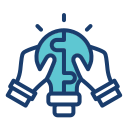Innovative Tools for Enhancing Remote Team Collaboration
Real-Time Communication Platforms
Modern messaging platforms offer direct, fast-paced interactions, enabling teams to exchange ideas as if they were working side by side. Features such as group channels, direct messaging, inline file sharing, and searchable archives ensure critical information is easily accessible. Customizable notifications keep team members informed without overwhelming them, while support for integrations ensures that discussions naturally lead to action. These tools make spontaneous collaboration feel effortless, bridging the physical distance between team members by simulating the immediacy of office conversations.
Previous
Next
Collaborative Document Editing
Cloud-Based Word Processors
Cloud-based documents empower team members to draft, comment, and revise content in real time, regardless of device or location. Features like live presence indicators and comment threads make it easy to see who’s working on what, while integrated change tracking ensures accountability. The seamless autosave functionality prevents data loss and keeps everyone aligned. With flexible sharing permissions, sensitive information remains secure, and cross-organizational workflows are supported with ease.
Interactive Spreadsheets
Modern spreadsheets offer more than data entry—they provide interactive analysis, collaborative formula editing, and the ability to embed charts or visualizations directly. Multiple users can input or adjust information simultaneously, reducing bottlenecks and enhancing data accuracy. Automated workflows and app integrations allow for real-time syncing of external data sources, making these tools foundational to decision-making and reporting in a fast-paced remote environment.
Real-Time Presentation Builders
Teams can now co-create presentations with dynamic elements, live feedback, and embedded multimedia, transforming the way ideas are shared internally or with clients. With simultaneous editing and integrated commenting, revisions happen fluidly and miscommunication is minimized. Presenters can rehearse together, annotate slides, and adapt content on the fly, facilitating engaging remote meetings and ensuring presentations reflect the latest team insights.
Advanced Task and Project Management
Visual dashboards, such as Kanban boards, provide a clear overview of ongoing tasks, assigned team members, and project status. Individual and group workloads are transparent, reducing redundancies and highlighting resource gaps. Drag-and-drop interfaces, task dependencies, and automatic status updates streamline process flows, helping remote teams stay focused and responsive to evolving needs. These tools cultivate accountability and provide managers with insights to balance workloads effectively.
Automation features reduce manual effort, minimize errors, and keep projects moving by handling routine updates, reminders, and follow-ups. Workflow automation adapts to unique team processes, ensuring that nothing falls through the cracks. From onboarding new team members to managing approvals, these systems integrate with calendars, communication platforms, and document repositories to orchestrate complex sequences of actions, saving time and supporting productivity across the board.
Goal-setting platforms align team efforts with organizational objectives, using OKRs or KPI frameworks tailored to remote environments. Progress tracking is transparent and visually engaging, with feedback loops, milestone reminders, and customizable reports. By linking daily activities to high-level goals, remote teams stay motivated and focused on outcomes, fostering a sense of purpose and accomplishment throughout project cycles.
Previous slide
Next slide

Asynchronous Collaboration Utilities
Persistent Discussion Boards
Message board platforms host threaded discussions, topic segmentation, and long-form sharing, creating an organized repository of insights and decisions. Unlike chat, these boards encourage deeper reflection and careful responses, surfacing diverse perspectives. Tagging, search, and archiving features ensure institutional knowledge is preserved and accessible for onboarding or revisiting previous conversations, strengthening organizational memory.
Shared Annotation and Review Systems
Asynchronous annotation tools enable team members to review designs, code, or documents, offering targeted feedback through comments, highlights, or suggested changes. Each participant can be notified of updates or required actions, empowering transparent and thoughtful collaboration. Timestamped annotations and notification batching reduce distractions and prevent feedback overload, supporting high-quality work without disrupting individual work rhythms.
On-Demand Video and Screen Recording Software
These tools allow team members to present updates, explain complex topics, or demonstrate workflows without scheduling live meetings. Shared video libraries and searchable transcripts make it easy for colleagues to consume information as needed. This approach minimizes scheduling conflicts and accommodates diverse working hours, promoting inclusive communication and reinforcing key messages through visual and auditory storytelling.
Robust file storage platforms secure data through end-to-end encryption, granular access controls, and multi-factor authentication. These solutions enable safe sharing of sensitive documents both within and outside the organization, with version history to restore previous iterations if needed. Remote teams benefit from knowing that intellectual property and client information remain protected, promoting confidence in digital collaboration.
Secure File Sharing and Centralized Knowledge Repositories
Employee Engagement and Team Building Tools
Virtual Water Cooler Spaces
Dedicated casual chatrooms and virtual lounges mimic spontaneous office interactions, promoting informal bonding and knowledge-sharing outside of structured meetings. Icebreakers, interest-based channels, and scheduled social events help team members connect as people, reducing isolation and building trust. These virtual spaces provide a safe environment for humor, personal stories, and celebration, enhancing morale and collaboration across distances.
Recognition and Reward Platforms
Digital recognition systems empower managers and peers to celebrate achievements, milestones, and everyday contributions in real time. Customizable awards, leaderboards, and public acknowledgments motivate consistent performance and reinforce company values. Integrated points or reward systems can be redeemed for perks, fostering a sense of progress and appreciation that transcends physical barriers.
Well-being and Support Resources
Remote work can blur boundaries between personal and professional life, making mental health resources, coaching, and stress management tools essential. Platforms offering guided meditation, virtual fitness classes, or access to counseling services support holistic employee well-being. Thoughtful check-in routines and feedback surveys enable organizations to address concerns proactively, resulting in healthier, happier, and more resilient teams.
